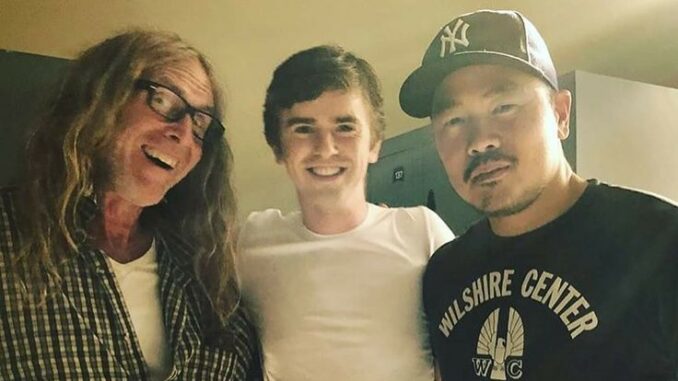
In the opening episode of Season 4, The Good Doctor does what few scripted shows dared to do so soon — it launches us directly into the COVID-19 pandemic. The episode, aptly titled “Frontline (Part 1),” isn’t just about introducing a new season; it’s about immersing viewers in the terrifying, confusing, and emotional early days of a global crisis that changed the world. And perhaps most impressively, it does so with deep sensitivity, medical integrity, and a laser focus on the human element.
As the episode opens, St. Bonaventure Hospital is already overwhelmed. The hallways are full, PPE is scarce, and the medical staff is exhausted. We see new safety protocols, isolation wards, and a growing number of cases. The sense of urgency is palpable, and the tension never lets up.
Dr. Shaun Murphy is at the emotional and clinical core once again. Navigating a pandemic is hard for everyone, but for Shaun — who thrives on routines and personal connection — the social distancing measures hit especially hard. Unable to hug, unable to comfort, and unable to touch Lea, Shaun begins to struggle. The barriers are both physical and emotional. His frustration builds as he realizes that the empathy he has worked so hard to express can no longer be demonstrated in the ways he knows best.
Meanwhile, the hospital’s staff is experiencing various levels of burnout, trauma, and helplessness. Dr. Claire Browne is still reeling from the death of Dr. Melendez in Season 3, and the mounting deaths around her now only intensify her grief. Her coping mechanism becomes work. She throws herself into treating patients — but even the strongest walls begin to crack.

In one of the episode’s most touching arcs, a COVID-positive mother and her newborn are separated at birth due to infection control. Shaun and Claire must find a way to treat the mother without endangering the baby. The tension builds around both the emotional cost and the ethical debate. And when the mother’s condition deteriorates, the drama hits even harder. It’s a harsh depiction of the choices hospitals had to make in real life during the pandemic — save one, risk the other, or do the impossible.
The writing in “Frontline (Part 1)” is unflinching, yet humanizing. It doesn’t try to dramatize the pandemic beyond what it was. The fear, the burnout, the dying patients, the absence of family at the bedside — all of it is tragically familiar. Instead of grand resolutions, the episode leans into small moments of hope and humanity. A video call between a dying father and his daughter. A nurse breaking down in the supply closet. A doctor taking off her mask just to breathe. These are the details that hit hardest.
The supporting cast also gets meaningful moments. Dr. Park begins to question his work-life balance and his role as a single father. Dr. Lim struggles to maintain leadership while grappling with the emotional fallout of non-stop crisis. Everyone is stretched thin — physically, emotionally, and morally. The episode’s realism lies in its honesty: this isn’t heroism without cost. Every act of bravery is weighed down by fatigue and fear.
Visually, the episode feels different. The cinematography is tighter, the lighting more muted, and the hospital never feels fully safe. The use of masks and face shields adds to the authenticity, even as it creates a barrier between characters and viewers. Yet despite the layers of protection, the emotion comes through in every glance and gesture.
What makes “Frontline (Part 1)” so powerful is its immediate relevance. Filmed during the actual pandemic, it captures a moment in time — one that audiences had just lived through or were still living. Instead of serving as escapism, this episode offers reflection. It gives voice to the anxiety, the grief, the helplessness that people around the globe had felt.
And yet, even in the darkness, The Good Doctor never lets go of hope. The episode ends not with a cure, not with victory, but with resilience. Doctors show up for another shift. Nurses tend to new patients. Shaun, still uncertain about the future, finds new strength in love and purpose. The message is clear: We may not be okay yet, but we are trying. And trying — even in the face of tragedy — is enough.
